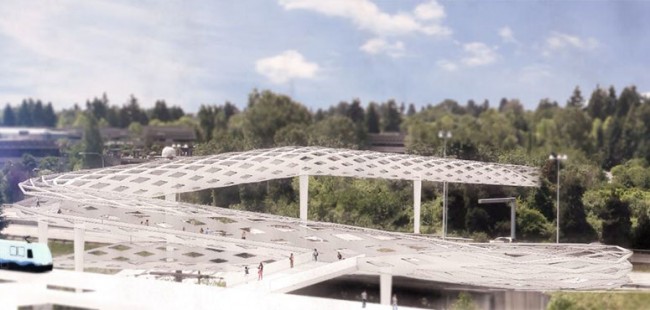SDOT Releases Detailed Move Seattle Budget

Northgate Pedestrian Bridge Concept
Perhaps responding to criticism that no one understood the details of the Move Seattle levy, late yesterday SDOT released a detailed spreadsheet that explained their year-by-year spending plan.
According to Director Scott Kubly,
The plan's allocations are consistent with the levy legislation and its specific funding categories. If the levy is approved, oversight for spending and deliverables will be provided by a levy oversight committee and the City Council, and information on large projects will be available through SDOT's new online capital projects dashboard.
Quite sensibly, the City retains some flexibility as needs and opportunities arise. But barring any interesting developments, there are three components of the $930m plan through 2024:
- A steady $22-23m every year for Safe Routes, for a total of $207m.
- $420m for maintenance and repair, including
- $250m for paving
- $30m for Urban Forestry
- $140m for bridges, with about half for seismic reinforcement, and finishing the Fairview Bridge by 2018 ($27m).
- $303m for "congestion relief," various improvements to mobility and access, on which more after the jump.
Light Rail Access ($27m): the schedule envisions Northgate Bridge done by 2019, Graham Street by 2020, and the Accessible Mount Baker project by 2022. In some cases the actual schedule will of course depend on other funding sources.
Freight Mobility ($39m): $20m of this is for the Lander crossing, to finish in 2023.
Pedestrian Master Plan ($68m): For some reason, $7m for "bike spot safety" is grouped in this total.
Corridor Mobility ($169m): This is the big one, the multimodal reconfiguration of streets. The schedule suggests we'd see 23rd Ave and Fauntleroy by 2018, Madison BRT by 2019, the Burke-Gilman Missing Link in 2020, Delridge and Market/45th by 2021, Route 40 in 2022, and both Rainier/Jackson and Roosevelt/Downtown in 2023. Each of these projects averages $10.5m to complete. There's further steady funding for signal timing, Intelligent Transportation Systems (ITS), and $35m for "Transit Corridor Improvements."
It's clear from this breakdown why the Mayor had to radically grow the package from the expiring Bridging the Gap levy. A pure BtG renewal would generate about $440m, barely enough to maintain roads and bridges. Doing anything to reduce traffic deaths, make exercise safe, and make buses faster and more reliable requires a significant increase.